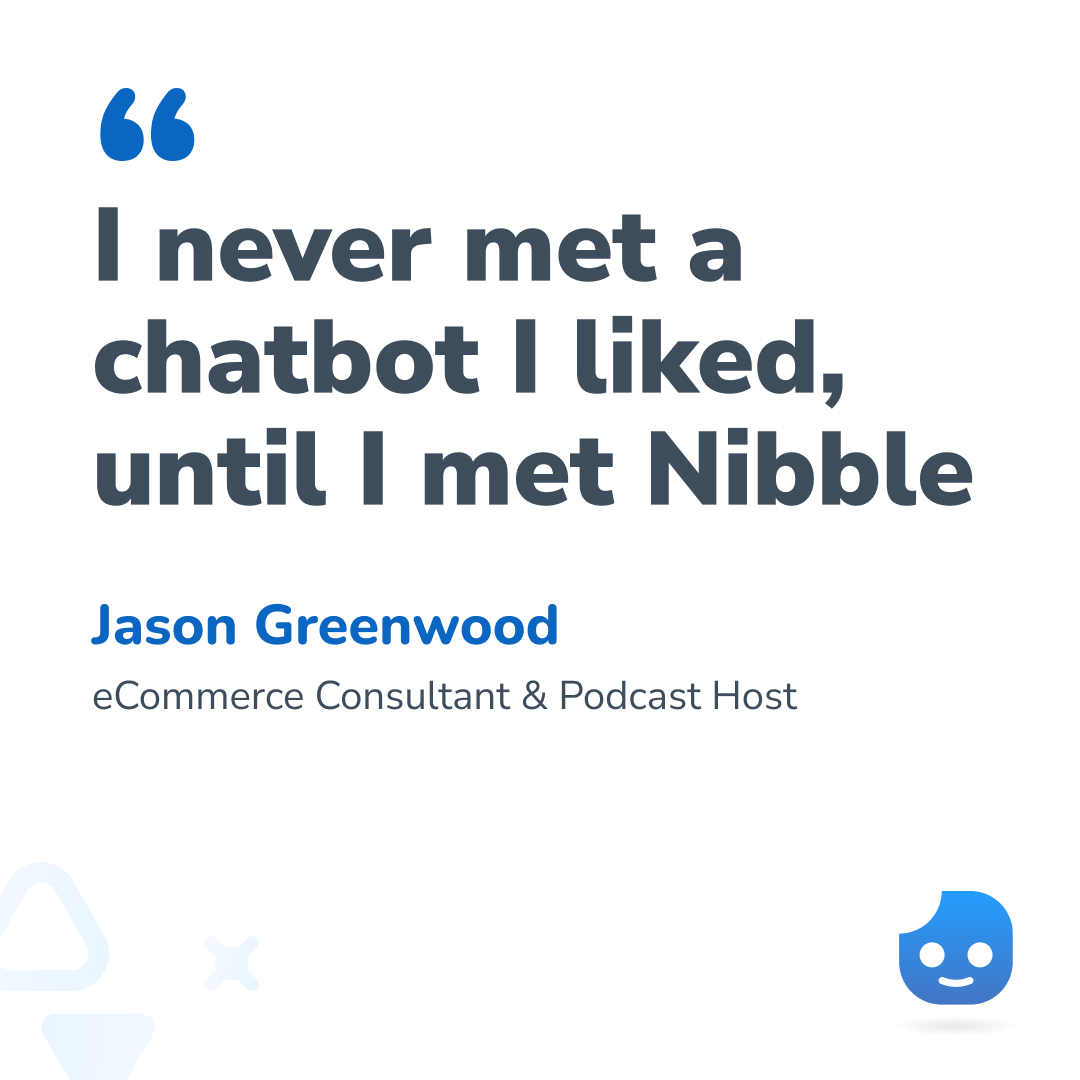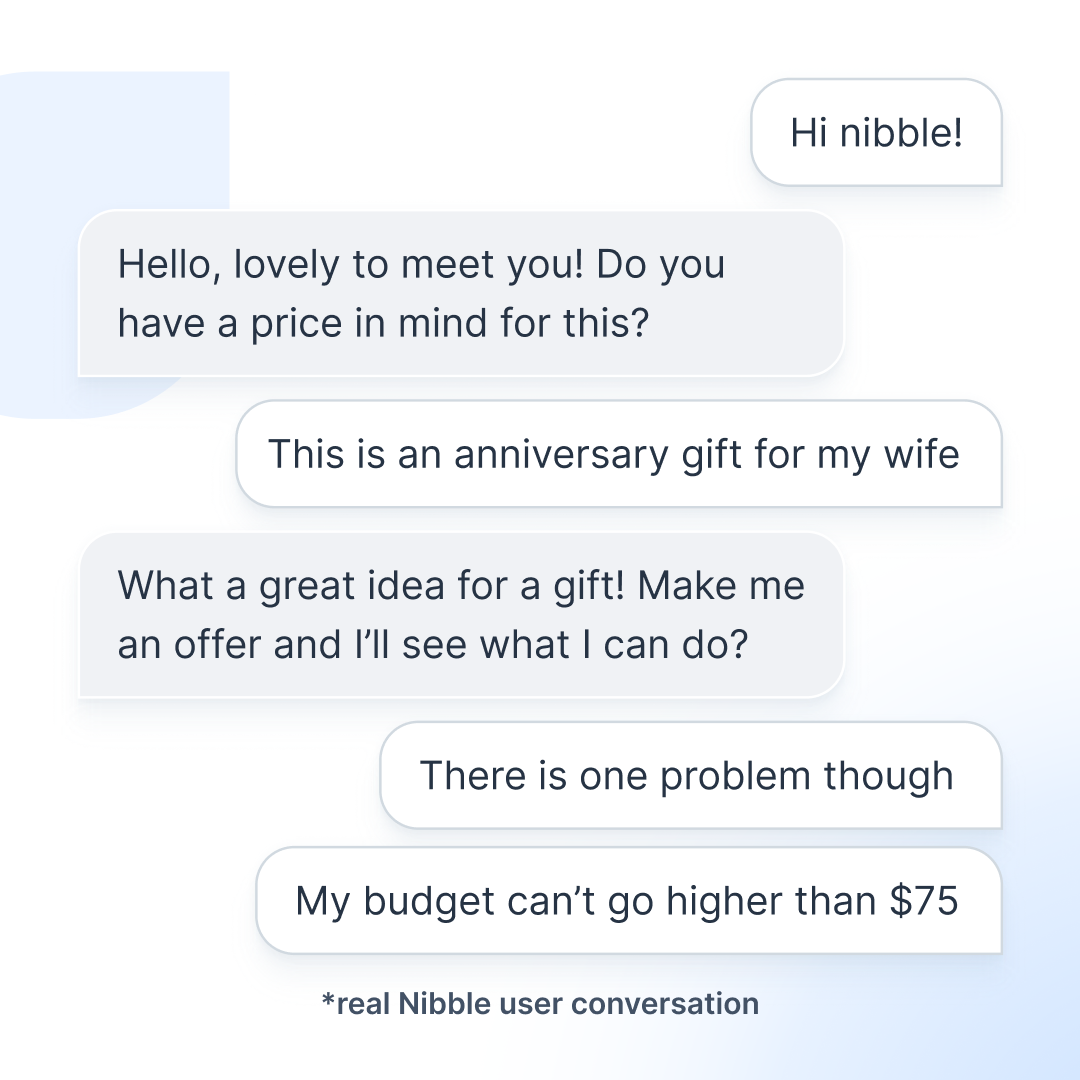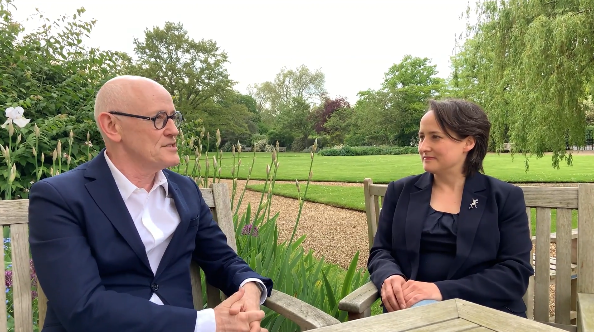
? “Hello, how can I help you today?”
? “hi i need to cancel my contract”
? “Sorry, I don’t understand. Please try again.”
? “my phone has just been stolen, i need to cancel my contract”
? “That’s great! I will help you renew your contract.”
ARRGGHH!!!
Chatbots and voice assistants have become commonplace online, and in recent years their quality has improved dramatically. Thankfully, experiences like the above are less common than they used to be.
It’s easy to think of the bad conversations we’ve all had – but what about when you’re having a smooth conversation with a bot? When you’re not having to carefully word your requests, and you understand exactly what message the bot wants from you at any time?
These seamless conversations are thanks to good Conversation Design. We’ve spoken with Nibble’s Head of Conversation Design, Tim Willers, to learn what that is and why it’s so important.
Every journey you make online—whether you’re seeking information, purchasing something, or wanting entertainment—should feel simple and human, particularly when it comes to dealing with bots.
What is Conversation Design?
 Conversation Design (CxD) is a crossover of technology, language and psychology, making AI assistants more helpful and natural when they talk to humans.
Conversation Design (CxD) is a crossover of technology, language and psychology, making AI assistants more helpful and natural when they talk to humans.
Good Conversation Design makes an experience with a chatbot positive, useful, and above all, natural. It demands an understanding of how users interact with chatbots, the confines of the technology, and the importance of clear language to orchestrate authentic-feeling conversations.
This industry has boomed in the last few years as advancements in AI and natural language processing have led to chatbots becoming far more than just interactive FAQs.
Your best chatbot experiences will be ones where you don’t even have to think about how to communicate with the bot. Thank the Conversation Designers!
How does Conversation Design fit into Nibble?
Nibble negotiates with shoppers online to find a win-win price that works for both the customer and the retailer. But, why does AI Negotiation work so well?
The first rule of good Conversation Design:
“Don’t pretend to be a human.”
Doing so throws a curveball into the user experience when the illusion inevitably breaks down, and users can feel tricked or manipulated.
That rule works in Nibble’s favor – negotiation is a subject that can make people feel uncomfortable in real life. It’s the same with medical issues or financial conversations. If you know you’re talking to a robot, you’re more likely to speak openly, honestly, and not be afraid of saying anything ‘wrong’. By being clear that Nibble is a bot, our users chat more openly than they would with a live agent, which naturally leads to better negotiations.
Beyond this crucial first rule, Nibble is full of Conversation Design fundamentals, for example:
- It has a carefully crafted bot personality. Actually, TWO personalities, toggle-able as needed: a cheerful, friendly tone of voice with humour; and a professional business tone of voice.
- It employs classic CxD techniques like framing in chats to ensure conversations stay on track (“Hi, I’m Nibble. I’m here to help you get a deal on this today.”), and explicit confirmations (“Is that really your final offer?“) to keep conversations flowing smoothly and make sure it is understanding correctly at pivotal moments – and simultaneously improving the chance of conversion.
How CxD improves negotiation success

Let’s look at the real example chat above, when a shopper was looking for an anniversary gift for their wife.
First of all, any chatbot should be able to recognise a greeting message and respond appropriately. But we also want to keep our conversation centered around the negotiation and not let it steer too far off-track. To do this, we make sure messages end with a question that guide the user down the correct path.
Of course, sometimes a user will miss your first prompt and give you different information instead – just like what happened above when we were told the product is an anniversary gift. It’s useful context to the negotiation, and responding well to relevant information is central to CxD, but we couldn’t allow ourselves to be drawn off-course.
So we recognise the comment, respond appropriately to ensure the user knows they have been understood, and then re-prompt and steer the user back on track.
From here on, we get great information on the user’s budget, and both Nibble and the user can start talking numbers.
How do real negotiation skills get translated into Nibble?
Nibble is trained by a team of negotiation experts, including Niro Sivanathan, a leading professor of negotiation at London Business School.
This team taught Nibble real-life negotiation techniques to ensure negotiations feel human, natural and lead to win-win outcomes.
For example, take anchoring. The first offer in any negotiation sets the context – or ‘anchors’ – for the rest of the conversation. In Nibble’s case, this manifests in Nibble offering first in many negotiations, rather than asking the user to make an offer. By doing this, the shopper’s expectations are set so they know what kind of discount is realistic and attainable, and deals are subsequently more likely to be agreed.
Nibble also uses reasons in negotiations to improve the likelihood of deals being agreed.
Negotiation science has shown that giving any reason for a proposal greatly improves the chances of it being accepted.
Our new feature Brand Value Statements incorporates a retailer’s brand values – i.e. reasons to buy from them – to shoppers at the exact moment when they’re considering or wavering over an offered price.
This feature is gold dust for values-based retailers, as a new report from Edelman released this month showed Gen Z, more than any other age group, wants brands to make their values clear “when I’m about to make a purchase” (64%).
Some final thoughts on Conversation Design at Nibble
Good Conversation Design comes from doing one thing really well. In Nibble’s case, that is negotiation and everything that falls under that umbrella.
That doesn’t solely come down to the language Nibble uses, but the offers it makes back to users, too — thanks to an advanced negotiation algorithm that acts as Nibble’s very own secret sauce. Every offer needs to feel fair and justified, like a real successful negotiation.
Within Nibble, CxD is a careful balance of numbers and words to craft a smooth negotiation with every shopper. These negotiations need to take into account the demands of both the shopper and the retailer to make sure everyone leaves negotiations feeling like it’s been a win-win.
What next?
Talk to Nibble yourself and try to get a deal on a watch with our live demo – remember, purchase intent is key for an authentic experience!
Or, learn more about the importance of communicating brand values to shoppers online.
Interested in Nibble?


